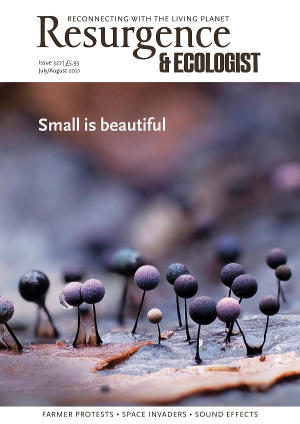When we wonder how best to provide food for pollinators, it would be pretty herbaceous plants such as lavender or catmint most of us would think of first. However, the simple height of flowering shrubs and trees means they can provide an abundance of flowers that far exceeds that of any herbaceous plant. Of course, you may not have room for full-size trees, but many smaller shrubs and dwarf versions of large tree species are available that are suitable for almost any size of garden, and by going upwards you can pack more flowers into your space, whatever its size. If they are native species, they may provide food for a broad range of herbivorous insects, from the caterpillars of butterflies and moths to the grubs of gall wasps. Plus, of course, if you grow a tree you are locking up carbon in the trunk, carbon that will hopefully be trapped there for decades, maybe even hundreds of years. It is a small contribution to reversing climate change, but every little helps.
Apple (Malus pumila, family Rosaceae)
Most of us grow apples primarily for the fruit, but they are a good source of forage for bumblebee queens in April and May, for red mason bees, which are mainly active at this time of year, and also for some mining bees that emerge early in spring. Of course, the bee visits help to ensure a good crop.
Horse chestnut (Aesculus hippocastanum, family Sapindaceae)
Native to southern Europe, horse chestnuts are commonly planted as specimen trees in the UK. They grow to 30 metres or more, so are only suitable for large gardens. However, if you do have room for one it will produce frothy masses of white flowers in late April and May that provide plentiful reddish-brown pollen and abundant nectar, attracting honeybees and bumblebees.
Lime (Tilia spp., family Malvaceae – mallows)
Eventually becoming huge and beautiful trees (more than 40 metres tall), limes should only be considered if you have a lot of space and patience. There are a number of closely related and easily confused species, the most common being the native small-leaved lime (Tilia cordata), the large-leaved lime (Tilia platyphyllos) from continental Europe, and hybrids of the two, often known as common lime (Tilia x europaea). All produce inconspicuous, highly fragrant, greenish flowers in June and July, which are hugely attractive to honeybees and short-tongued bumblebees, particularly buff-, white- and red-tailed bumblebees.
Sycamore (Acer pseudoplatanus and relatives, family Sapindaceae)
Sycamores were introduced to the UK in the Middle Ages and are now one of our commonest large trees. They are not widely recognised as bee plants, for their flowers are small, green and easily overlooked. No one, though, has told the bees, who enthusiastically gather nectar and pollen from them in April and May. In my garden, common carder bumblebees seem particularly attracted to sycamore, but it also attracts honeybees and solitary bees such as the tawny mining bee.
This is an edited extract from Gardening for Bumblebees: A Practical Guide to Creating a Paradise for Pollinators by Dave Goulson (Square Peg, 2021).






